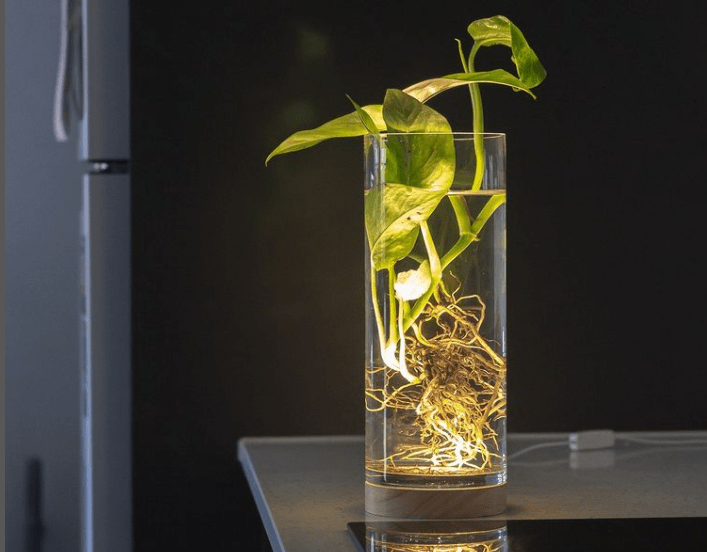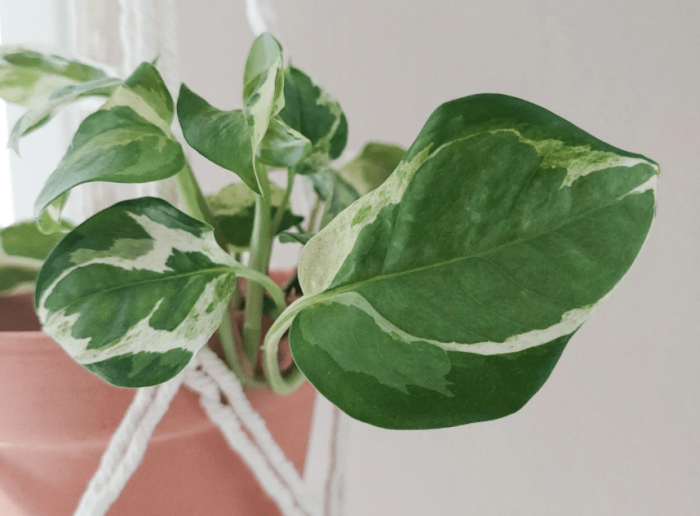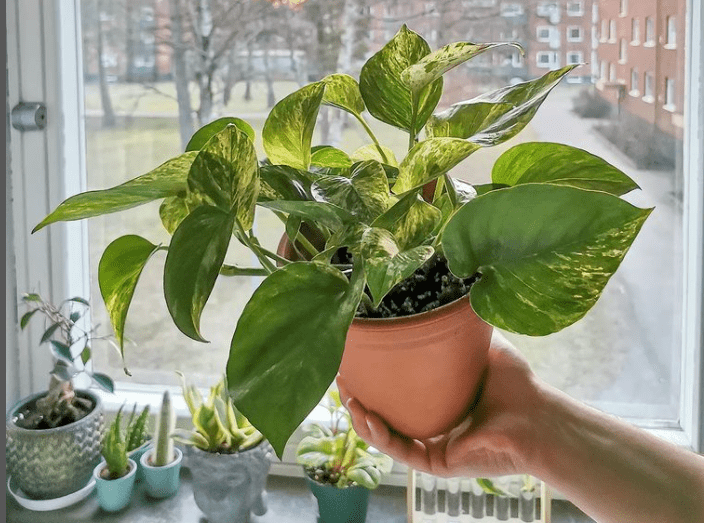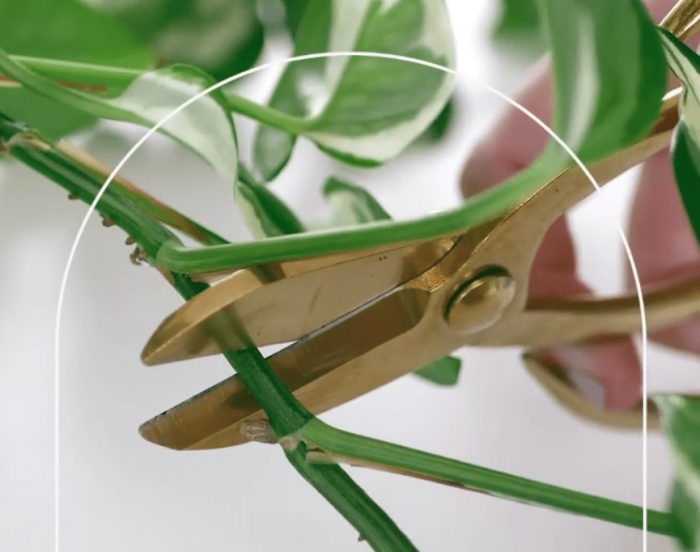How to grow and care for Pothos plant?

Pothos plant or Scindapsus is one of the plants recommended for amateur gardeners, who are not yet sure of having a green thumb. This houseplant is easy to grow and maintain, but it still requires some precautions.
Find out in this article the description of this plant, how to grow and some tips for caring for it!
Pothos description
Pothos, named also Scindapsus, Epipremnum or commonly Devil’s Ivy, belongs to the Araceae family. It is native to hot and humid areas in Southeast Asia and eastern India. This tropical vine has aerial roots that cling to trees in its natural environment. Indoors, Pothos can reach 2 m height with a very decorative shape. Its many evergreen leaves are shiny, heart-shaped and arranged alternately on the long climbing or drooping stems. These leaves often have gold, white or yellow variegation. Otherwise, the majority of the Pothos varieties grown indoors rarely flower.
The vining nature of the Devil’s Ivy plant makes it an excellent choice for use in hanging baskets, draped across shelves, or climbing up a wall.
Pothos is also known to have depolluting properties against some pollutants such as carbon monoxide (heating, motors), toluene (paints, solvents), benzene (inks, fumes, paints, varnishes) and formaldehyde (agglomerates, glues, insulations, varnishes).
How to propagate Pothos plants

Pothos are very easy to grow and propagate, making them lovely houseplants to share with family, friends, and neighbours. Here are some tips to propagate these beautiful depolluting indoor plants.
Cuttings
Pothos cuttings are the easiest and fastest way to propagate the plant. It is generally easy to cut in the spring. For this:
- Take cuttings or stems of about 10-15 cm
- Remove the bottom leaves and keep just 2 or 3 leaves.
- Plant your cuttings in well-drained mixture, or a special cutting compost.
- Place the cuttings in a rather warm and bright plant without direct sunlight.
- Keep the soil moist.
- Change water every 2-3 weeks.
Roots will develop over a month or two. Then, to have the lushest growth, grow multiple stems in the same pot.
Division
Pothos can also be propagated through division. To do that, gently take the suckers growing at the base of the plant and repot then in light and moist substrate.
Pothos plant care
Pothos gets its other common name, Devil’s Ivy, thanks to its vigorous growth and its tendency for bouncing back to life even in the worst conditions!
Like any tropical plant, Pothos prefers some specific growing conditions, which will be mentioned below.
Temperature and humidity
Pothos loves humidity and heat. It adapts well to the temperature of a normally heated room. A temperature of 18 to 25° is recommended for good growth. In winter, be sure to keep it at a temperature that does not drop below 14°C. Do not place it near a radiator that dries the air.
Light

Pothos plant can do with medium light, but its foliage will be much more colorful in bright light. So choose a bright location, but without direct sunlight. Then, don’t forget that varieties with variegated foliage need more light (like golden Pothos). Grow your Pothos in high quality, well-draining potting mix.
Soil for Pothos
Grow your Pothos in high quality, well-draining potting mix. They prefer a slightly acidic pH of 6.1 to 6.5 but are tolerant of values slightly above or below.
Pothos watering
Water every 1 to 2 weeks, allowing the soil to dry out between waterings. Water the plant only when the surface of the soil is dry and avoid excess water so as not to suffocate the roots. Space out the waterings to a strict minimum during the winter, because the plant then has limited water needs. Water more often in brighter light and less often in dimmer light.
Pothos fertilizer
For Pothos, the addition of fertilizer is not essential but can support the growth of your plant. So, you can add ordinary liquid fertilizer for green plants, once a month in spring and summer.
Pothos pruning

Pothos pruning is not essential. Aerial roots located at the nodes on the stem are very useful to the plant, so it is recommended not to touch them. Prune the pothos in the spring if it has long stems. Cut the stems by 1/3 and your plant will quickly regain its beautiful appearance and new vigor.
Repotting Pothos
Repot the young, fast-growing plants every spring until they are installed in a pot of 20 cm in diameter. Afterwards, you can just practice surfacing by replacing the substrate for 4 cm deep each year with a fresh mixture.
Pests and diseases
Pothos is usually pest-free. However, the plant can occasionally become infested with spider mites and mealybugs. A simple insecticidal soap controls the pests, but the easiest method is to simply dab the insects with an alcohol-soaked cotton swab.
Root rot can occur when the plant is overwatered or the soil doesn’t drain well. Leaves will turn yellow and growth will be stunted.
Are Pothos Plants Poisonous?
Yes. Despite being a very popular houseplant, pothos is mildly toxic. All parts of the plant contain a substance called calcium oxalate, which are microscopic crystals that act as a contact irritant. It is therefore advisable to place the plant in height so that young children and pets do not come and chew its leaves.
Did You find this helpful? Share it with your friends!